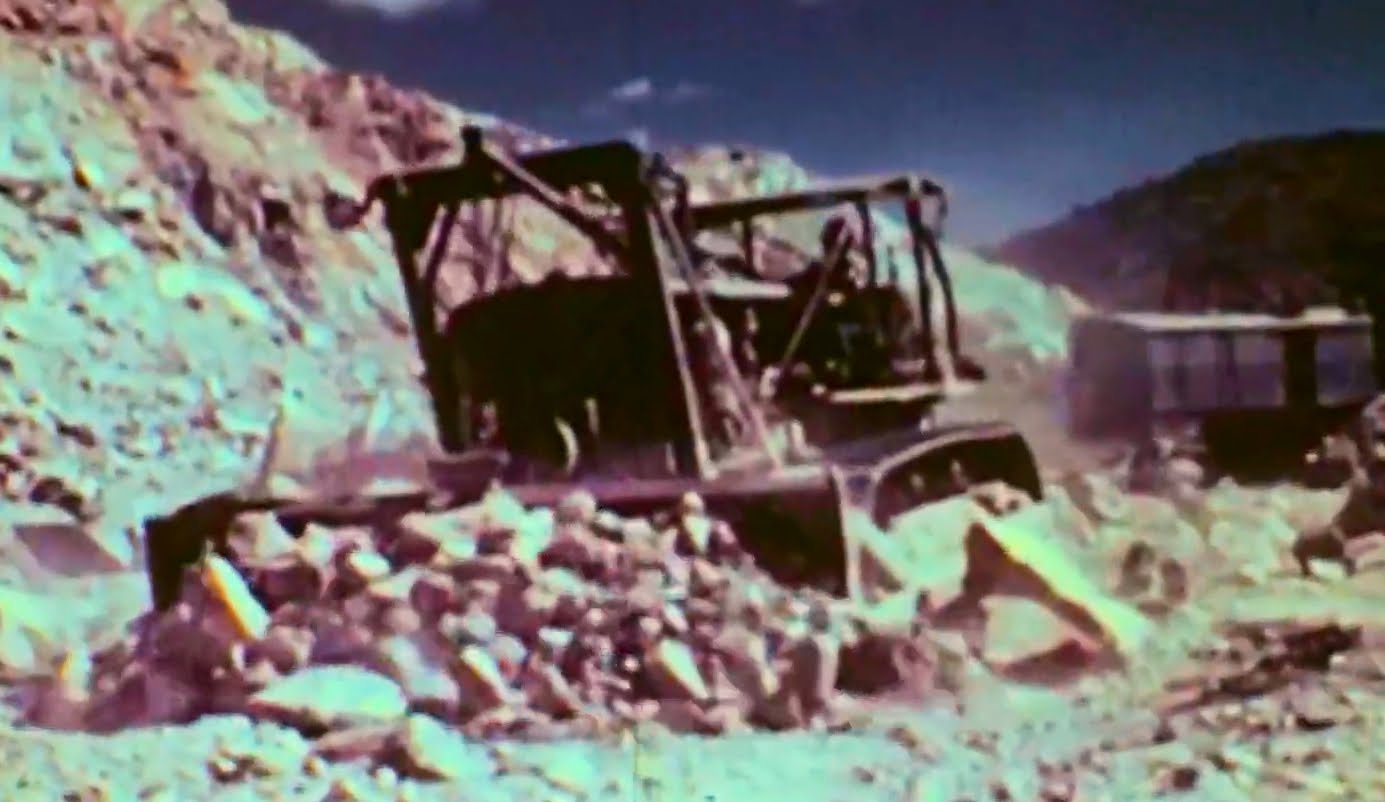more at
“Tells the story of the mining and manufacture of copper from the crude ore to the finished product. lots of footage of giant machines, some blasting.”
Public domain film, slightly cropped to remove uneven edges, with the aspect ratio corrected, and mild video noise reduction applied.
The soundtrack was also processed with volume normalization, noise reduction, clipping reduction, and/or equalization (the resulting sound, though not perfect, is far less noisy than the original).
Copper extraction techniques refers to the methods for obtaining copper from its ores.
The conversion of copper consists of a series of chemical, physical, and electrochemical processes. Methods have evolved and vary with country depending on the ore source, local environmental regulations, and other factors.
As in all mining operations, the ore must usually be beneficiated (concentrated). To do this, the ore is crushed. Then it must be roasted to convert sulfides to oxides, which are smelted to produce matte. Finally, it undergoes various refining processes, the final one being electrolysis. For economic and environmental reasons, many of the byproducts of extraction are reclaimed. Sulfur dioxide gas, for example, is captured and turned into sulfuric acid — which is then used in the extraction process…
History
The earliest evidence of cold-hammering of native copper comes from the excavation at Çaÿonü Tepesi in eastern Anatolia. The radiocarbon date is 7250 ± 250 BCE. Among the various items considered to be votive or amulets there was one that looked like a fishhook and one like an awl.
An archaeological site in southeastern Europe (Serbia) contains the oldest securely dated evidence of copper making at high temperature, from 7,000 years ago. The find in June 2010 extends the known record of copper smelting by about 500 years, and suggests that copper smelting may have been invented in separate parts of Asia and Europe at that time rather than spreading from a single source.
Copper smelting technology gave rise to the Copper Age and then the Bronze Age.
Concentration
Most copper ores contain only a small percentage of copper metal bound up within valuable ore minerals, with the remainder of the ore being unwanted rock or gangue minerals, typically silicate minerals or oxide minerals for which there is often no value. The average grade of copper ores in the 21st century is below 0.6% copper, with a proportion of economic ore minerals (including copper) being less than 2% of the total volume of the ore rock. A key objective in the metallurgical treatment of any ore is the separation of ore minerals from gangue minerals within the rock.
The first stage of any process within a metallurgical treatment circuit is accurate grinding or comminution, where the rock is crushed to produce small particles…
Subsequent steps depend on the nature of the ore containing the copper. For oxide ores, a hydrometallurgical liberation process is normally undertaken, which uses the soluble nature of the ore minerals to the advantage of the metallurgical treatment plant. For sulfide ores, both secondary (supergene) and primary (hypogene), froth flotation is used to physically separate ore from gangue. For special native copper bearing ore bodies or sections of ore bodies rich in supergene native copper, this mineral can be recovered by a simple gravity circuit…
Until the latter half of the 20th century, smelting sulfide ores was almost the sole means of producing copper metal from mined ores (primary copper production)…
The copper is refined by electrolysis. The anodes cast from processed blister copper are placed into an aqueous solution of 3–4% copper sulfate and 10–16% sulfuric acid. Cathodes are thin rolled sheets of highly pure copper or, more commonly these days, reusable stainless steel starting sheets (as in the IsaKidd process). A potential of only 0.2–0.4 volts is required for the process to commence. At the anode, copper and less noble metals dissolve. More noble metals such as silver, gold, selenium, and tellurium settle to the bottom of the cell as anode slime, which forms a salable byproduct. Copper(II) ions migrate through the electrolyte to the cathode. At the cathode, copper metal plates out, but less noble constituents such as arsenic and zinc remain in solution unless a higher voltage is used. The reactions are:
At the anode: Cu(s) → Cu2+(aq) + 2e−
At the cathode: Cu2+(aq) + 2e− → Cu(s)…

